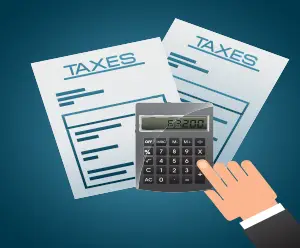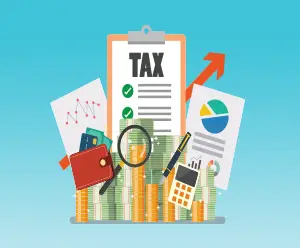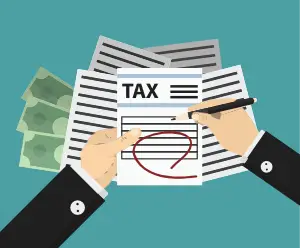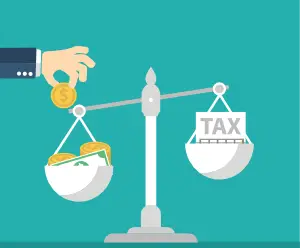
Understanding the IRS Substitute for Return
Click to ask Mike Ask Mike The Internal Revenue Service (IRS) Substitute for Return (SFR) is a term many taxpayers

Installments Agreements will allow you to pay your tax debt in monthly installments if you cannot pay your taxes in full. By complying to the conditions of your payment agreement, you can avoid IRS collection action, such as wage garnishments and bank account levies. As long as you continue to make payments on time and fulfill all of your current tax responsibilities, the IRS won’t seize any of your assets. Just remember that you will be expected to make interest payments on the amount that you owe in addition to any penalties and fees that may be applicable until the total is paid in full. There are a variety of installment agreement payment options available to assist you in paying down your tax debt. In this article, you will learn about the various payment options that can assist you in paying off your outstanding tax debt.
Eligibility and Types of Installment Agreements
To qualify for an IRS installment agreement, several criteria must be met. Taxpayers must have filed all required tax returns, owe $50,000 or less in tax debt, and demonstrate the ability to pay off the debt within a reasonable timeframe. There are different types of installment agreements available, including Guaranteed Installment Agreements, Streamlined Installment Agreements, Partial Payment Installment Agreements, and Non-Streamlined Installment Agreements.
Common Types of Installment Agreement
Guaranteed Installment Agreement (GIA)
Streamlined Installment Agreement (SIA)
Non-Streamlined Installment Agreement (NSIA)
In-Business Trust Fund Express Installment Agreements
Partial Payment Installment Agreement (PPIA)
Routine Installment Agreement
Applying for an Installment Agreement
The application process for an installment agreement can be done through various methods. Taxpayers can apply online, over the phone, or by mail using Form 9465. Once the application is submitted, it typically takes the IRS between 1 and 2 months to approve the payment plan.
Payment Options and Evaluating Eligibility
Installment payments can be made through direct debit, money order or check, debit card or credit card (with processing fees), or the Electronic Federal Tax Payment System (EFTPS). Taxpayers who owe more than $50,000 may need to complete Form 433 to provide financial information for assessment.
Understanding Installment Agreement Terms
IRS installment agreements come with specific terms and conditions that taxpayers must understand before entering into an agreement. These include the 6-Year Rule, the 1-Year Rule, interest charges, minimum monthly payment calculation, IRS evaluation of eligibility, default, and consequences, as well as changes and reinstatement.
Monthly Payment Options and How to Request an Installment Agreement
Depending on the installment agreement, taxpayers can utilize various payment options, including direct debit, money order, check, debit card, credit card, or electronic payments via EFTPS. Requests for installment agreements can be made online, over the phone, or by mail using Form 9465. Taxpayers may also need to submit Form 433 if they owe over $50,000 or have complex financial situations.
Approval Process and Potential Penalties
Upon submission of the installment agreement request, the IRS typically takes between 1 and 2 months to approve the payment plan. However, taxpayers should be aware of potential penalties and interest charges that may continue to accrue during the repayment period.
Having Multiple Installment Agreements and Possible Denials
Taxpayers with existing installment agreements who are unable to pay new tax debts may be able to add the new debt to their current agreement. However, the IRS may refuse installment agreement requests for various reasons, including previous defaults or false information provided.
Defaults and Consequences of Missing Payments
Missing payments or failing to comply with the terms of the installment agreement can result in default. The IRS provides a grace period of 30 days to reinstate the agreement, but failure to respond may lead to termination of the agreement and potential collection actions by the IRS.
Why You Should Consider an Installment Agreement
Installment Agreements will allow you to pay your tax debt in monthly installments if you cannot pay your taxes in full. By complying with the conditions of your payment agreement, you can avoid IRS collection action, such as wage garnishments and bank account levies. As long as you continue to make payments on time and fulfill all of your current tax responsibilities, the IRS won’t seize any of your assets. Just remember that you will be expected to make interest payments on the amount that you owe in addition to any penalties and fees that may be applicable until the total is paid in full. There are a variety of installment agreement payment options available to assist you in paying down your tax debt.
What You Can Expect from an Installment Agreement
Why You Want to Choose the Right Installment Agreement
What is Required by the IRS for an Installment Agreement
Before applying, you must be in compliance with the IRS. This means that all your tax returns and payment obligations need to be up to date at all times. You cannot currently be in a bankruptcy proceeding. You’ve filed all required tax returns and paid all taxes owed in the previous 5-years. You cannot have utilized an installment agreement within the previous 5-years. You must be current with all your filing requirements You agree to file and pay all future taxes on time. You comply with tax laws for the duration of the payment agreement.
What You Should Consider Before Asking for an Installment Agreement
Approval is Contingent Upon the Amount You Owe
IRS Setup Fees for an Installment Agreement
These Factors Determine Which Installment Agreement You Can Get
In conclusion, understanding the nuances of IRS installment agreements is crucial for taxpayers facing financial difficulties. By navigating the eligibility criteria, application process, terms, and implications, individuals can make informed decisions to effectively manage their tax obligations and work towards financial stability. If you find yourself in need of such an arrangement, it’s essential to explore your options and engage with the IRS to find the best possible solution for your financial situation.
You can now ask our AI assistant any questions you have about your tax debt or any tax-related issues. Whether you’re unsure about payment plans, need clarification on penalties, or want information on how to resolve your tax situation. Our AI is ready to assist you with all your tax-related concerns.

By interacting with our AI assistance, you agree to our terms & conditions. Enjoy our AI Tax Assistant responsibly.
Ask me any questions...
Related Posts

Click to ask Mike Ask Mike The Internal Revenue Service (IRS) Substitute for Return (SFR) is a term many taxpayers

Click to ask Mike Ask Mike The Internal Revenue Service (IRS) Substitute for Return (SFR) is a term many taxpayers

Click to ask Mike Ask Mike The Internal Revenue Service typically operates within a 10-year window, commencing from the

Click to ask Mike Ask Mike The Internal Revenue Service (IRS) operates within specific timeframes dictated by statutes of limitations

Click to ask Mike Ask Mike understanding the ins and outs of the 10-year statute of limitations (SOL) is essential.
Recent Posts

Click to ask Mike Ask Mike The Internal Revenue Service (IRS) Substitute for Return (SFR) is a term many taxpayers

Click to ask Mike Ask Mike The Internal Revenue Service (IRS) Substitute for Return (SFR) is a term many taxpayers

Click to ask Mike Ask Mike The Internal Revenue Service typically operates within a 10-year window, commencing from the

Click to ask Mike Ask Mike The Internal Revenue Service (IRS) operates within specific timeframes dictated by statutes of limitations

Click to ask Mike Ask Mike understanding the ins and outs of the 10-year statute of limitations (SOL) is essential.
Disclaimer: This is educational content, not legal, accounting, or tax advice.
This is a tax debt resource website, not to be used in lieu of a tax attorney or for legal advice. All information, Ai chat responses, articles, materials, and content are intended to inform users on a variety of tax topics. In no way is it intended to be construed as accounting, legal, tax, other services or advice. This site is not intended to be used to avoid tax penalties or tax debt that may be imposed by law. Terms and Conditions. Your use of this site constitutes acceptance of the following terms and conditions.
This is a tax debt resource website, not to be used in lieu of a tax attorney or for legal advice. All information, Ai chat responses, articles, materials, and content are intended to inform users on a variety of tax topics. In no way is it intended to be construed as accounting, legal, tax, other services or advice. This site is not intended to be used to avoid tax penalties or tax debt that may be imposed by law. Terms and Conditions. Your use of this site constitutes acceptance of the following terms and conditions.
© 2023 · Tax Debt Monster, Inc. All rights reserved

For all Tax Professionals that would like to partner up with us. By partnering with us, you’ll help us connect and make a positive impact in the tax community. Partner up with us and receive a complimentary Ai Tax Sidekick to help support your clients at no cost! Click here if you’re interested in our Partner-Up program

By interacting with our AI assistance, you agree to our terms & conditions. Enjoy our AI Tax Assistant responsibly.
How may I help you with your tax issue?